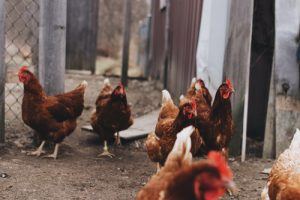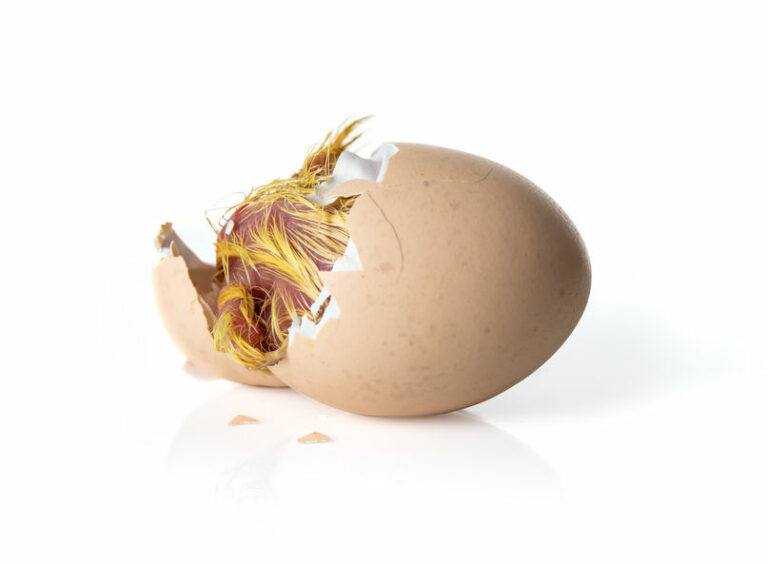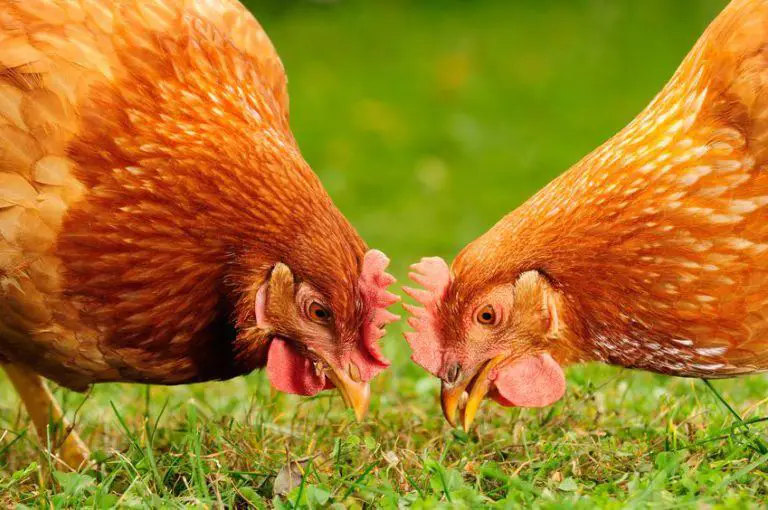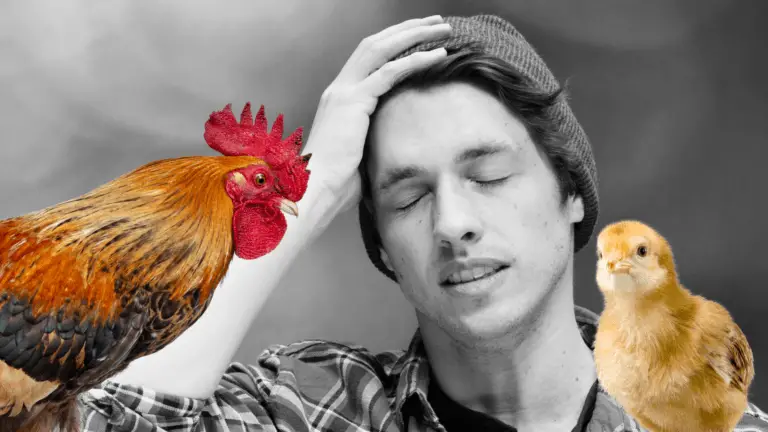Deep Litter Method For Chickens – What’s All The Stink About?
If you own chickens, you know that cleaning up the poop is one of the least appealing tasks of owning chickens. But not removing the poop can, of course, create some serious stink but also affect the health of your chickens.
So what are the best ways of managing the poo issue? My personal favorite is using the deep litter method for chickens, but there are other methods as well. We’ll take a peek at a few of these methods and you can decide which method YOU want to use for your chickens.
If you are here researching or still in the planning process of building your coop, check out this guide to get you started.
Importance Of Keeping Your Coop Clean
To add a bit of background to this topic, I want to stress here how important it is to keep your chicken coop relatively clean. Now don’t be thinking spotless floors, daily cleaning etc. as that would drive anyone away from wanting to raise some hens.
But there are some compelling reasons that your coop should be reasonably clean, at least free from excessive poop and odors:
- Less Odor – I suppose this goes without saying, but too much of an odor coming from your coop is bad for your chickens as they can get respiratory issues. Not only that, if you have neighbors, they probably wouldn’t like it too well either!
- Prevent Sickness/Disease – To piggy back on the above comment, a smelly coop (especially if not well ventilated) can create a build up of ammonia smell which can lead to respiratory issues for your flock.
What Is Deep Litter Method
The deep litter method is essentially a layer of bedding (wood pellets, hemp, straw, wood shavings, leaves, hay, paper, sawdust, and more) roughly 2 inches on up to however high you want it. Personally, I start out with 2 inches of bedding when I first get my chickens and then just keep stirring it up with a rake or shovel around once or twice a week. I then just keep adding additional bedding on top of the original bedding once it begins to break down. Then I just repeat the same process. It’s as simple as that!
Your chickens can help with this process too – if you throw out a handful of scratch grains, meal worms, or some tasty treat they like into the bedding, they will dig and scratch at it. This further stirs up the bedding and they, in part, do a lot of the work for you!
Also – because chickens love taking dust baths, they can often do that once your bedding is deep enough. So not only do they help stir up the bedding, they also take care of any mites/parasites they have to – a real “win win!”

Advantages Of The Deep Litter Method:
- Simplicity – The only work involved is raking the droppings into the bedding at occasionally and, most likely, your chickens natural tendencies to scratch and dig will also help with this.
- Odor Control – It may seem counter intuitive to simply rake the poo into the bedding and think that’ll take care of the odor but it does. I’ve been using this system for over 15 years and have not had any issues with smell. It doesn’t take a lot of work and there is no ammonia smell.
- Less Cost – Because the litter is not being disposed of regularly, it saves a lot of money on bedding costs! I use wood pellets for my coop and don’t need to buy more than 3-4 bags of 40 lb wood pellets per year.
- Better For The Chickens –
- Because the bedding controls the ammonia smell, your flock won’t be breathing in noxious fumes.
- Also, chickens LOVE to take dust baths to rid themselves of mites and parasites on their skin and the deep litter method can help them do this by providing a deep enough layer of bedding to “bathe” in!
- No Additional Cleaning Chemicals Are Needed – In fact, it can actually damage the delicate decomposition process happening with the combo of chicken dropping and the bedding. Adding chemicals or diatomaceous earth may seem like a good idea to destroy unwanted mites/parasite in the bedding. However, this will disturb that balance and can render the deep litter method ineffective. The parasites in the droppings/bedding assists with the decomposition and makes the whole process work. Crazy but true!
Problems Using Deep Litter Method
- Forgetting to stir the poo into the bedding – especially under the roost where it accumulates at night. Too much pile up and an ammonia smell can develop and the chickens are more susceptible to disease, respiratory issues etc.
- Wet Weather – Some chicken farmers say the deep litter method is not as effective in wet weather. I live in the Pacific NW where it rains about 5-6 months/year and it’s never been an issue. However, I always make sure my coop doesn’t have a draft or leak anywhere so the bedding stays mostly dry.
Types Of Bedding Available For This Method
- Wood Pellets – These have worked great for me for years and cost around $5 – $6 per 40 lb bag. The floor of my coop is 4 ft x 6 ft and I can get by using around 5 – 6 bags per year for my coop. And that is the total amount of pellets used for the year. I start off with 2 bags of pellets on the floor and then add the rest of the bags as needed throughout the year. Chickens love to take dust baths in it when is starts to break down. It can be bought at your local farm store, hardware store, or online.

- Straw – I’ve tried straw before and it works okay, but for the deep litter method it doesn’t seem to be as effective. The chickens don’t scratch around in it as much and it’s harder to stir it. The bonus of using straw is that it’s reasonable absorbent, and the price is affordable…Per bale, it’s about $5.00/bale (give or take) and, depending on the size of your flock, will last for several months by adding a new flake of the bale every so often. I also like the smell of straw. Farm stores carry it, or it can be bought online.

- Hemp – This is one that can be effective as well and creates less dust than some of the other bedding choices. It can be easily stirred and spread over the floor and the chickens love to scratch and take dust baths in it. Hemp can be found at the farm stores occasionally, but not as common there. It can be bought online.

- Leaves – Not the best as they can deteriorate quickly, but in the Fall when they are falling it could be a FREE source of bedding.

- Pine Shavings – This one is also pretty good but can get wet fairly easy. If you live in a wetter climate like I do, you may have a hard time keeping it from matting together. The advantage is the smell! Although that quickly goes away when the chickens start doing their thing on it:) Also, chickens aren’t as likely to use it as dust bath. It’s a reasonably priced product, but may not work as well for the deep litter method. Pine shavings can be bought online, pet stores, and farm stores.

- Hay – Similar to straw but not as absorbent. Personally, I’d only use it if it’s all I had. It works better as a bedding for nest boxes.

- Newspaper or recycled paper – It’ll work but gets wet and matted fairly quickly. Probably the least effective for the deep litter method.

- Other – If you have other types of bedding you like for your coop, they will likely work using this method as well.
When To Clean Your Coop When Using The Deep Litter Method
As stated earlier, you don’t have to clean your coop very often when using the deep litter method – how awesome is that! But having said that, you still have to clean it out once in awhile.
As to when you should clean out your coop? I clean it out once it gets to around 8 inches deep. But even then, the smell is not bad at all and some of the wood pellets bedding I use isn’t fully decomposed so I could probably even go much longer than a year.

But I clean it after a year or when it gets to around 8 inches high because I don’t want it to get too deep. I’ve talked to some people who let it get to around 12 inches or more. So there really is not right or wrong answer here. It’s really up to you and what you prefer for your coop.
When you do need clean it out – this stuff is AWESOME for the garden! Rich compost you’d pay a lot of money for if you had to buy it at the store.
For other directions on cleaning your coop, see this article.
I hope you learned a few things here about the deep litter method and will consider it for your flock. If you have any questions about the method or have other methods you prefer instead, please leave a comment below. We’d love to hear from you. So much of raising chickens is a matter of personal preference.
I love using wood pellets for my litter base. If you’ve tried other materials i.e. straw, hay etc. please let us know how it’s worked for you! Thanks for stopping by.








After growing up on a farm, I get this!
Chicken Coops can get nasty!
I love your format on this, and the site is an interesting read, simple and informative.
With more residential areas allowing coops, you’ve picked a great niche! And I think it will do well.
I give it a 10 out of 10!
Thanks for your comment Shaunna! Yes the chicken raising hobby has really taken hold. I’m glad to offer help about this fun past time!
Nice post dear
I have be planning to go into poultry business back home but am looking for the most cost effective way to achieve that. This deep litter method is great, I love everything about the concept but I don’t know whether it can be feasible for me back home in Africa.
I believe the deep litter method can work well in any country. If you can find wood pellets, hay, straw, or whatever type of bedding is available in Africa, I don’t see why it wouldn’t work.
Also – it should be cost effective because you’re not constantly replacing their bedding every week, or every month etc. It really only needs to be cleaned out once a year so the savings will be there over other methods. Great comment – thanks!
In research mode here. Shooting for July – coop building; August chick ordering.
Oh, and I meant to thank you for your time and effort in sharing this article/blog post.
Hello and thank you for your comments! Yes, those are great breeds as well. We’ve tried many different breeds and, if socialized well, even breeds that are not known to be friendly or docile can be very easy keepers.
I’m afraid I’m going to end up with grilling wood pellets instead of ones for bedding. To you have a particular type you recommend from tractor supply or Lowe’s or places like that?
Hello! I just buy the Dry Den Brand or whatever our local farm stores carry.